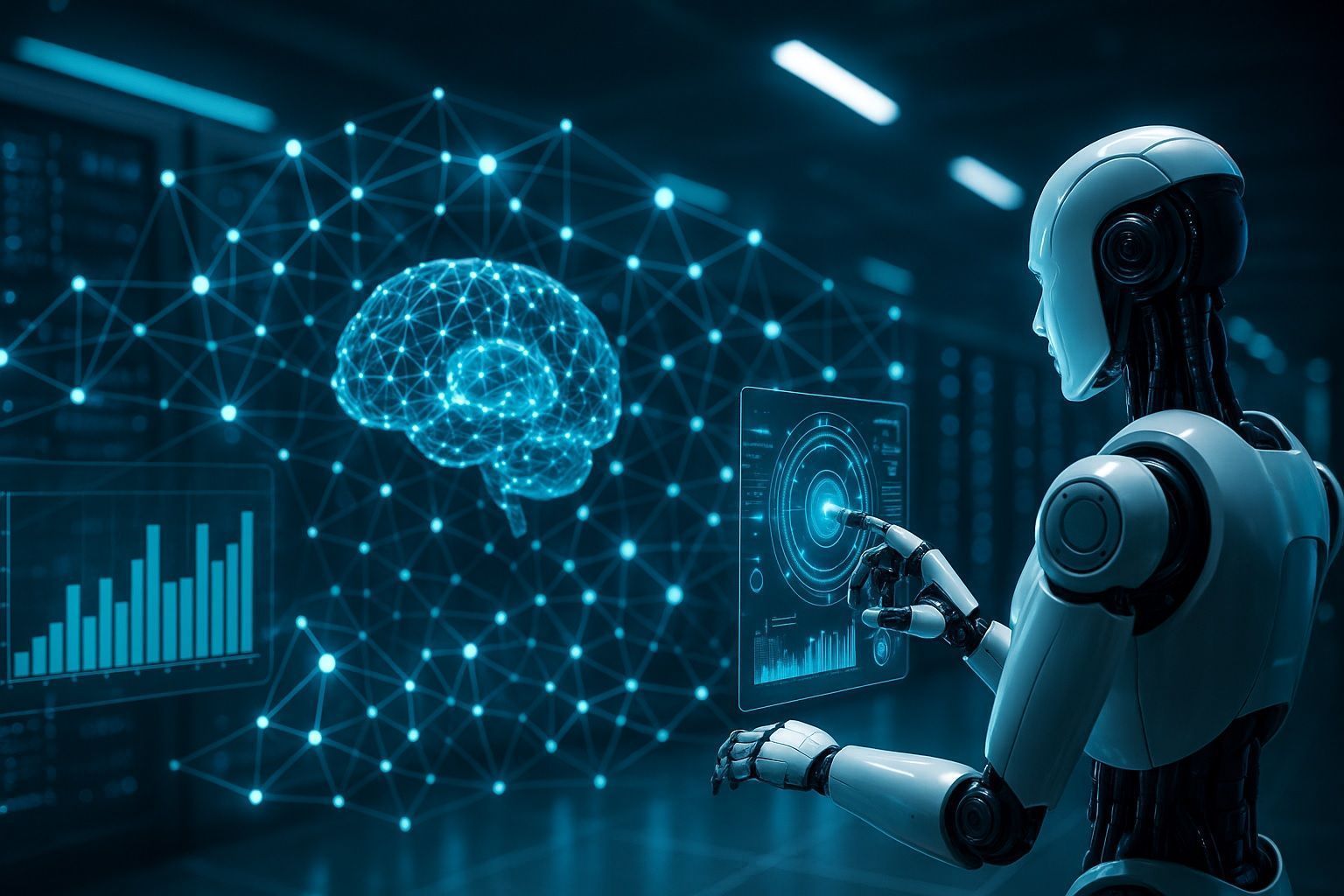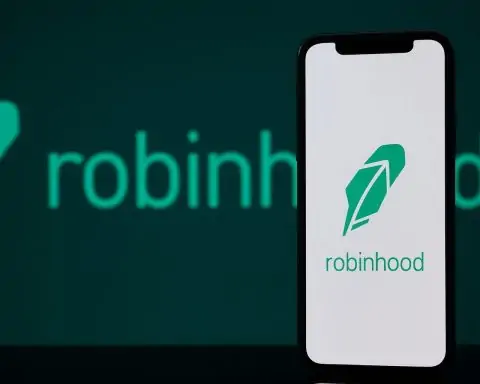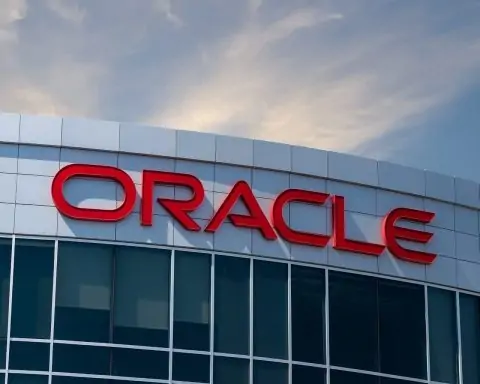- In mid-June 2025, OpenAI CEO Sam Altman indicated that an anticipated open-source AI model would be delayed to later in the summer, not June.
- On June 30, 2025, Mark Zuckerberg announced Meta’s Meta Superintelligence Labs, naming Alexandr Wang as Chief AI Officer and Nat Friedman as a partner, with Meta hiring 11 engineers from Anthropic, Google DeepMind, and OpenAI that month.
- In June 2025, Google began integrating its Gemini AI into consumer apps with parental controls, while Microsoft expanded AI copilots across Windows and Office.
- In late June 2025, Air Canada refunded a customer after its AI chatbot provided incorrect travel advice.
- By mid-2025, several U.S. states had criminalized deceptive deepfake political ads as concerns over AI-generated misinformation grew.
- On June 25, 2025, Google DeepMind unveiled AlphaGenome to interpret the genome’s dark matter, handling sequences up to 1 million base-pairs and predicting gene expression and mutation effects.
- In early July 2025, Google DeepMind demonstrated Gemini Robotics running locally on robots, introduced the open-source Gemini-ER, and launched the Asimov benchmarking suite for robotic AI safety.
- In June 2025, Thinking Machine, founded by ex-OpenAI CTO Mira Murati, raised $2 billion at a $10 billion valuation.
- The EU AI Act, adopted in June 2024, began enforcing bans on unacceptable-risk AI from February 2, 2025 and requires transparency for generative AI by mid-2025, with governance bodies like the European AI Board and the AI Office established.
- In July 2025, China implemented new regulations requiring algorithmic transparency and watermarking of AI-generated media.
Artificial intelligence – especially generative AI – continued its explosive growth in June and July 2025, marked by headline-grabbing news, scientific breakthroughs, industry moves, market forecasts, new regulations, and debates on societal impact. AI has firmly entered the mainstream: for example, a June 2025 survey found 61% of American adults had used an AI tool in the past six months (nearly 1.8 billion users globally, with ~500–600 million using AI daily) [1]. Below is a comprehensive overview of the key developments during this period, with sources and dates.
Major AI News and Announcements (June–July 2025)
- OpenAI’s Model and Industry Moves: In mid-June, OpenAI CEO Sam Altman indicated that the company’s anticipated open-source AI model would be delayed – expected “later this summer but not June,” after previously teasing it earlier in the year [2]. OpenAI and other leading labs remained intensely focused on deploying ever more capable models, though Altman’s comments signaled that even AI’s frontrunners were pacing their releases. Meanwhile, high-profile talent shifts and new ventures grabbed headlines. On June 30, Meta’s Mark Zuckerberg announced a new “Meta Superintelligence Labs” division to spearhead the company’s AI efforts [3]. Former Scale AI CEO Alexandr Wang joined Meta that month (via a multibillion-dollar acquisition deal) to lead this group as Chief AI Officer, alongside former GitHub CEO Nat Friedman as a partner [4]. Meta also made 11 new AI hires from competitors like Anthropic, Google DeepMind, and OpenAI [5]. Zuckerberg’s internal memo (publicized at the end of June) outlined plans to develop next-generation AI models “to get to the frontier in the next year or so” [6] – underscoring Big Tech’s race for “superintelligent” AI.
- Generative AI in Media and Apps: The generative AI boom continued to reshape consumer internet services. Tech news outlets noted that artificial intelligence is undeniably the story of the year, as AI features become ubiquitous across products [7]. Throughout June, companies rolled out AI-powered enhancements: for example, Google began integrating its “Gemini” AI into consumer apps (even letting children safely use its generative models, with parental controls) and Microsoft expanded AI copilots across Windows and Office (following launches earlier in 2025). On the creative side, new AI tools for image, music, and coding generation rolled out in beta. Even social media and e-commerce saw AI integrations – from LinkedIn’s AI job search assistant to AI-driven shopping recommendations – as reported by tech outlets in early summer. (Many of these features had been announced at spring developer conferences and were entering public use by June.)
- Notable AI Incidents: Though largely a period of progress, a few AI-related mishaps drew attention. In late June, Reuters highlighted how Air Canada was forced to refund a customer after its AI chatbot gave incorrect travel advice [8] – a cautionary tale about over-reliance on imperfect AI systems. Such incidents fueled ongoing discussions about testing and safety for AI deployments (particularly in sensitive consumer-facing roles). Separately, concern continued over AI-driven misinformation: several U.S. states had passed laws criminalizing deceptive deepfake political ads, and observers warned of AI-generated content influencing public opinion [9]. These worries kept pressure on AI firms to develop safeguards and on lawmakers to update electoral laws ahead of upcoming votes.
Scientific and Technical Breakthroughs
- AI Tackles Genomics: A major AI research breakthrough came from Google DeepMind in late June 2025. On June 25, DeepMind unveiled a new model called AlphaGenome, designed to interpret the human genome’s “dark matter” – the 98% of DNA that does not code for proteins but influences gene activity [10]. Described in a preprint and press briefing on June 25 [11], AlphaGenome can take extremely long DNA sequences (up to 1 million base-pairs) and predict various biological effects, such as gene expression levels and the impact of mutations. Scientists who had early access reported the model as “a genuine improvement in pretty much all current state-of-the-art sequence-to-function models,” calling it “an exciting leap forward” for computational biology [12]. While still in an early stage, this AI tool demonstrated unprecedented ability to predict how non-coding genetic variants contribute to diseases like cancer [13]. The advance was likened to how DeepMind’s AlphaFold cracked protein folding; now AlphaGenome aims to unlock functional genomics – a fundamental scientific challenge [14]. Researchers noted, however, that interpreting DNA has no single “right answer” (unlike protein 3D structures), so AlphaGenome’s all-in-one approach will undergo rigorous validation. Nonetheless, the work exemplified AI’s growing role in scientific discovery, from biology and medicine to climate modeling and beyond.
- Advances in Robotics and Vision: Beyond genomics, the period saw technical progress in AI for robotics and multimodal understanding. In early July, Google DeepMind researchers demonstrated a Vision-Language-Action model that runs locally on robots – enabling machines to follow voice commands (like “fold the paper” or “put the glasses in the case”) without cloud connectivity [15] [16]. This “Gemini Robotics” model (first announced in spring 2025) was shown successfully generalizing to new tasks and environments not in its training data [17]. A slimmed-down version was open-sourced for researchers (Gemini-ER), along with a new benchmarking suite (“Asimov”) to evaluate robotic AI safety [18]. These steps reflect a broader trend of AI moving from simulation to the real world – from helping robots operate reliably offline to AI-driven autonomous vehicles (in June, Waymo and Uber expanded an autonomous taxi service in Atlanta [19]). In computer vision, generative models for images and video continued improving realism, raising both excitement (for creative tools) and concern (for deepfakes). Researchers and ethicists published work on mitigating “model collapse” – the degradation that can occur if AI systems train on AI-generated data repeatedly – to preserve long-term quality of generative models [20] [21]. Overall, the summer of 2025 saw AI research pushing into new domains (genomics, robotics) while refining the robustness of generative AI techniques.
Business and Industry Developments
- Massive Funding and New Ventures: The investment frenzy in AI showed no sign of abating. In one of the largest startup financings ever, Thinking Machine – a new AI venture founded by ex-OpenAI CTO Mira Murati – raised $2 billion in funding by late June, vaulting it to a $10 billion valuation [22]. The Financial Times (June 20, 2025) called this one of Silicon Valley’s biggest seed rounds [23]. Murati had left OpenAI in 2023 and launched Thinking Machine in February 2025 with a mission to “advance AI by making it broadly useful and understandable through open science and practical applications” [24]. Her startup remained in stealth about its specific projects, but the enormous raise – alongside backing from prominent VCs – underscored investors’ eagerness to bet on AI luminaries. Similarly, Safe Superintelligence, a lab co-founded by OpenAI’s former chief scientist Ilya Sutskever, reportedly raised billions of dollars by mid-2025 to pursue safer advanced AI research [25]. This trend of OpenAI alumni launching well-funded ventures (including Periodic Labs by another OpenAI alum [26]) highlights the competitive, well-capitalized landscape of AI startups in 2025.
- Big Tech Acquisitions and Partnerships: Established tech companies accelerated M&A and partnerships to strengthen their AI capabilities. In early June, Meta announced a $14.8 billion deal for a 49% stake in Scale AI, a leading data-labeling firm [27]. Salesforce in late May agreed to acquire data-integration company Informatica for $8 billion [28]. And IBM closed its purchase of database provider DataStax (announced in February) to bolster its AI data pipeline [29]. These multibillion-dollar deals – struck within weeks – reflect how legacy tech giants are racing to own the “unglamorous” data infrastructure that fuels AI [30] [31]. “AI without data is like life without oxygen – it doesn’t exist,” noted Citi’s head of software banking, as companies like Meta and IBM scoop up specialists in data cleaning, integration, and labeling [32] [33]. The urgency to secure data and tools is driven by a need for speed: Goldman Sachs bankers observed that in the AI boom, “getting there first matters a lot,” prompting firms to buy rather than build wherever possible [34]. We are witnessing a once-in-a-generation tech land grab, where everything from cloud databases to annotation platforms have become hot acquisition targets in the AI race.
- AI Talent and Org Overhauls: Companies also reshaped their organizations to compete in AI. Meta’s creation of the Superintelligence Labs unit (mentioned above) came with aggressive recruitment – offering compensation “well into the eight-figure range” to lure top AI researchers [35]. In the financial sector, several major banks appointed their first-ever Chief AI Officers in June. The UK’s NatWest bank hired Dr. Maja Pantić (a noted AI expert and former director of generative AI research at Meta) as Chief AI Research Officer to “build differentiating AI capabilities” across the bank [36]. Denmark’s Danske Bank similarly named Kasper Tjørntved Davidsen as Chief AI Officer and head of generative AI, tasking him with integrating AI into the bank’s modernization strategy (“Forward ’28”) and its AWS cloud migration [37]. These new C-suite roles signal how critical AI is to enterprise strategy – not just in tech firms but across finance, healthcare, and other industries. Even regulators joined forces with industry: the UK Financial Conduct Authority (FCA) announced it will launch an AI sandbox in October 2025 in collaboration with NVIDIA [38]. The sandbox will let fintech firms experiment with AI in a controlled environment using Nvidia’s computing and AI software, aiming to spur innovation while ensuring compliance [39] [40]. Such partnerships illustrate how regulators are actively engaging to both supervise and support AI innovation in high-stakes domains.
- Product Launches and AI in Services: A steady stream of AI-powered product launches hit the market. In enterprise software, Microsoft, Google, and Salesforce each rolled out new generative AI features in their cloud offerings during June – embedding AI assistants in office suites, coding tools, and customer service platforms. In consumer tech, OpenAI expanded access to ChatGPT plugins and multi-modal capabilities, while startups launched specialized AI apps (for travel planning, personal finance, etc.). One notable collaboration in education was announced on June 26: British publisher Pearson entered a multi-year partnership with Google Cloud to bring AI tutoring tools into schools [41]. The initiative will use Google’s advanced AI models to create personalized learning systems for K-12 students – adapting to each student’s pace and needs, and assisting teachers with tracking progress and tailoring lessons [42] [43]. Pearson’s CEO stated that AI can fundamentally shift education away from one-size-fits-all teaching toward individualized learning paths for every child [44]. Pearson also signed similar AI partnerships with Microsoft and Amazon for education, underlining how digital learning is being transformed by AI at scale. In media and entertainment, news publishers continued striking licensing deals with AI firms (following earlier agreements by firms like The New York Times and Financial Times to allow training on their content). And broadcasters experimented with AI-generated voices – for instance, some sports networks began using AI voice clones for commentary in minor broadcasts, sparking discussions about authenticity and consent. Overall, by mid-2025 virtually every sector – from banking to education to media – was rolling out AI-driven products or services, indicative of AI’s broad impact on business models.
Market Forecasts and Trends
- Surging AI Investment: The market outlook for AI in 2025 grew even more bullish over the summer. Gartner Inc. issued a striking forecast that global spending on generative AI would reach $644 billion in 2025, a 76% increase over the prior year [45]. (For context, that implies well over half a trillion dollars flowing into AI software, hardware, and services in a single year.) This figure – published in a Gartner report from March and cited by Reuters in June – underscores the breakneck growth as organizations invest in AI capabilities across the board. IDC likewise projected worldwide AI revenues climbing to $632 billion by 2028, with a CAGR above 20%, and AI software comprising an ever-larger share of the tech economy. Investors have certainly noticed: through the first half of 2025, AI-related companies dominated tech IPOs and venture funding league tables, and AI firms accounted for nearly 75% of the value of all tech M&A deals year-to-date [46] [47]. As one banker told Reuters, “data is having a zeitgeist moment” thanks to AI – driving a frenzy in both public and private markets [48].
- Consumer AI Adoption & Monetization: Though billions are being spent on AI, monetizing consumer-facing AI services remains a work in progress. According to a June 26, 2025 report by Menlo Ventures, the consumer generative AI market had reached an estimated $12 billion in annual revenue, roughly 2.5 years after the launch of OpenAI’s ChatGPT [49]. This sum is tiny compared to the user base: Menlo’s survey confirmed nearly 2 billion people now use consumer AI tools, yet only ~3% of them pay for premium services [50]. For example, even ChatGPT – the flagship product in this space – converts only about 5% of its active users into paid subscribers for ChatGPT Plus [51]. This gap between massive usage and low pay conversion signals a huge revenue opportunity if companies can improve their offerings or pricing. Menlo estimates that if all 1.8 billion users paid a hypothetical $20/month, the market could be $430+ billion – so the current ~$12 billion indicates how early we still are in monetizing AI at scale [52]. Nonetheless, growth is rapid: consumer AI spend in 2024 was up 6× from 2023 [53], and it’s expected to catch up to enterprise AI spend in the coming years. Who is driving this adoption? Surprisingly, not just the young. The survey found Gen Z leads in trying AI, but Millennials are the heaviest daily users, and even 45% of Baby Boomers reported using AI tools in the past six months [54]. Students and working professionals use AI at much higher rates than unemployed individuals, reflecting how work and school are key drivers of daily AI reliance [55]. These nuanced usage patterns (e.g. parents emerging as power users of AI assistance in daily life [56]) suggest that AI’s value is being realized in practical, everyday contexts – from drafting emails to planning family logistics. Experts predict that as useful AI applications multiply (and as trust in them solidifies), consumers will become more willing to pay, gradually closing the monetization gap.
- Expert Sentiment: Market analysts and industry leaders in mid-2025 struck an optimistic yet measured tone. Many see parallels to past tech booms (like mobile apps or cloud computing) where exuberance eventually gives way to sustainable growth. A recurring theme is that we are moving from the “hype” phase of AI to proving real value. A PYMNTS.com analysis noted that enterprise AI is no longer driven by vague POCs; instead it’s “unfolding incrementally” as companies calibrate AI capabilities to operational needs [57]. Crucially, this phase requires winning trust. A survey of 1,000 CFOs released in late June found 96% of finance chiefs are prioritizing AI integration, yet 76% also believe AI poses security or privacy risks to their business [58] [59]. This “trust gap” – enthusiasm tempered by caution – means organizations are investing in AI, but with an eye on governance. CFOs ranked AI as the top driver of change in their roles over the next 5 years, more than workforce shifts or economic trends [60]. Still, concerns about data privacy, cybersecurity, and regulatory compliance are front of mind, which could slow adoption if not addressed [61]. The consensus among experts is that AI’s transformative potential is enormous, but realizing it will require solving these challenges and demonstrating reliable ROI. Nonetheless, the sheer scale of talent and capital now pouring into AI suggests that even incremental progress will have cascading effects on productivity and the economy. Indeed, McKinsey projected AI could contribute trillions of dollars to global GDP by 2030, and those projections only grew rosier over the summer as new applications emerged.
Public Policy and Regulation Updates
- US Policy – Debating an AI Moratorium: In the United States, the summer brought heated debate in Washington over how (or whether) to regulate AI. A controversial proposal in Congress – sometimes called the “AI moratorium” – sought to bar U.S. states and local governments from regulating AI for the next 10 years [62]. This federal preemption measure was pushed by Senator Ted Cruz (R-TX) and allies, who attempted to attach it to a must-pass defense funding “megabill” ahead of a July 4 deadline [63]. Proponents of the moratorium (which notably included OpenAI’s Sam Altman, tech founder Palmer Luckey, and VC Marc Andreessen) argued that a patchwork of state AI laws would “stifle American innovation” just as the U.S. competes with China in AI [64]. They prefer a single national framework over 50 different regimes. However, the proposal met fierce opposition from many corners – not only Democrats but also several Republicans, AI safety researchers, labor unions, and digital rights groups [65]. Critics warned that banning state-level AI rules would remove crucial consumer protections and leave powerful AI systems effectively unaccountable [66]. For instance, the moratorium could override laws already on the books, such as California’s AB 2013 (which requires companies to disclose the training data used by their AI models) and Tennessee’s new “Elvis Act” (protecting artists from AI-generated impersonations) [67]. Governors from 17 states (all Republicans) sent a letter urging Congress to drop the moratorium, defending states’ rights to address AI harms like election deepfakes or biased algorithms locally [68] [69]. As of early July 2025, this battle was still unfolding – the moratorium had been slipped into a larger bill in May, but faces uncertain prospects as lawmakers negotiate the final package [70]. Regardless of the outcome, the episode highlighted a key tension in AI governance: federal uniformity vs. state experimentation. It also brought AI to the forefront of U.S. policy discussions, with Congress actively hearing from industry and civil society on issues from intellectual property to liability for AI decisions.
- Europe – AI Act Implementation: On the other side of the Atlantic, the EU moved from legislation to implementation of its AI Act, the world’s first comprehensive AI law. The EU AI Act had been formally adopted in June 2024, and by mid-2025 its provisions were starting to take effect on a rolling timetable [71]. Notably, as of February 2, 2025, the Act’s bans on “unacceptable risk” AI systems came into force [72]. This means certain AI applications are outright prohibited across the EU – including systems for social scoring, real-time biometric surveillance in public, or AI toys that engage in harmful manipulation of kids [73]. The Act sorts AI uses by risk: high-risk systems (like AI in medical devices, hiring, critical infrastructure, etc.) must meet strict requirements and register in an EU database [74] [75], while lower-risk uses have lighter rules. Generative AI received special attention: it isn’t automatically “high-risk,” but must comply with new transparency and copyright rules [76]. For example, generative models like chatbots or image generators deployed in the EU will need to clearly disclose AI-generated content to users, incorporate safeguards against illegal outputs, and publish summaries of any copyrighted material used in training [77]. These transparency requirements were set to apply 12 months after the law’s entry into force – i.e. by mid-2025 [78]. Large AI model providers are now gearing up to provide such documentation. Additionally, any AI system that could pose “systemic” risks (the Act’s term for very general-purpose AI like GPT-4) may face extra oversight, including mandatory audits and incident reporting to an EU AI Office [79]. The EU also established an AI regulatory sandbox and allocated support for startups to ensure innovation isn’t stifled [80]. Over June–July, Brussels was busy setting up the governance structures (a European AI Board and the AI Office) and issuing guidance to clarify the law’s provisions. The impact on industry is significant: many companies, from U.S. tech giants to European automakers, will have to audit their AI systems for compliance. Yet EU lawmakers tout the Act as a needed safeguard to ensure AI in Europe is “safe, transparent, and non-discriminatory” [81]. The summer saw active discussions between regulators and companies on codes of conduct to bridge the gap until the Act is fully enforced (most high-risk obligations won’t kick in until 2026–27 [82]). In sum, mid-2025 in Europe was a transitional phase of moving from principle to practice on AI governance, with the EU Act serving as a potential model for other jurisdictions.
- Global Coordination: Internationally, there were ongoing efforts to coordinate AI policy. The G7 nations (through the “Hiroshima AI Process” launched in 2023) met in July to discuss common approaches to AI safety standards and information sharing. The United Kingdom prepared to host a second Global AI Safety Summit (building on the first held at Bletchley Park in late 2023) to convene experts on issues like frontier AI risks and alignment. The United Nations floated the idea of an international AI watchdog agency, though concrete steps remained nascent. Meanwhile, China implemented new regulations (effective July 2025) requiring algorithmic transparency and watermarking of AI-generated media, aligning with its earlier rules on generative AI services. These global moves, though outside the Western media spotlight, are significant: they indicate that AI governance is now a worldwide priority, with both democratic and authoritarian regimes seeking to shape how AI is developed and used. Differences in approach persist (e.g. China’s focus on censorship and control versus Europe’s focus on ethics and rights), but mid-2025 showed increasing dialogue – including U.S.-China talks on AI military use – aiming to prevent misuses of AI and maintain some interoperability of rules.
Societal Impacts and Discussions
- Workforce, Jobs, and Productivity: The rapid infusion of AI into workplaces remained a double-edged sword in public discourse. On one hand, fears of job displacement persisted; on the other, emerging evidence suggested AI can augment human productivity rather than simply replace it. A global analysis by PwC – the 2025 AI Jobs Barometer released June 3 – revealed that AI is making workers more valuable on average, even in roles highly susceptible to automation [83]. PwC analyzed millions of job postings and found that industries with greater AI adoption have seen 3× higher growth in revenue per employee since 2022 [84]. Moreover, wages are rising twice as fast in AI-exposed industries, with pay increasing even for jobs that involve many automatable tasks [85]. In other words, companies investing in AI are often upskilling their workforce and boosting output, rather than cutting headcount wholesale. The report noted that while certain tasks get automated, new tasks emerge – shifting jobs to be “AI-augmented” rather than eliminated. For example, AI can handle routine data analysis, freeing employees to focus on strategy and creative work. That said, the gains are not evenly distributed: the need for new AI skills is driving a 66% faster rate of skill change in AI-heavy jobs compared to others [86] [87]. This points to a major societal challenge: reskilling and education. Governments and businesses over the summer ramped up training initiatives, from coding bootcamps for AI to on-the-job training programs, to help workers adapt to AI-driven changes. Tech leaders like IBM’s CEO argued that AI will create more jobs than it displaces in the long run, but they urged proactive measures to transition workers – a theme echoed in June’s OECD and World Economic Forum meetings on the future of work. Overall, the narrative by July 2025 had shifted slightly from “AI will take your job” towards “AI will change your job” – with an emphasis on augmentation over replacement.
- Education and Skills: The impact of AI on education and skills development was another focal point. As mentioned, companies like Pearson are actively integrating AI tutors into classrooms [88] [89]. By tailoring exercises to individual students, AI has shown promise in improving learning outcomes – early pilots in June indicated that students using AI-driven study aids saw improved test scores in certain subjects. However, educators caution that AI is no substitute for human teachers; rather, it can automate grading or provide practice material, allowing teachers to spend more time on one-on-one coaching. Universities in July held conferences on how to update curricula for the “AI age,” ensuring graduates have skills in working alongside AI (prompt engineering, data literacy, etc.). Interestingly, AI itself became a subject of study: enrollment in AI-related courses and degrees hit record highs in 2025. Meanwhile, concerns lingered about academic integrity – the ease of using ChatGPT to do assignments led some schools to adopt honor codes or AI-detection software, though by mid-2025 a more balanced approach was emerging: teaching students how to use AI as a tool ethically rather than outright banning it. As one education expert noted, “AI literacy will be as important as computer literacy” for the next generation, and the summer saw initial steps toward making that a reality in curricula.
- Ethical and Societal Debates: With AI’s growing influence, ethical debates intensified. Bias and fairness remained in the spotlight: in June, several civil rights groups urged a delay in deploying AI in hiring and law enforcement until stronger bias audits could be mandated, pointing to studies of racial/gender bias in AI systems. Companies like Google and Microsoft responded by publishing more details on their model evaluation processes and investing in bias mitigation research. Transparency was another key issue – as deepfake videos and AI-generated news proliferated, calls grew louder for clear labeling of AI-generated content (aligned with the EU’s new rules [90]). By July, major social media platforms started testing “AI-generated” labels on suspect images or text posts, and a coalition of AI firms pledged to develop open standards for watermarks. Privacy concerns were also raised: an incident in late June saw an AI-powered scheduling app leak sensitive user data, reminding everyone that AI systems are only as secure as the data pipelines behind them. This prompted discussions about requiring privacy impact assessments for AI deployments handling personal data. On a more philosophical level, prominent AI experts continued to debate long-term AI risks. Notably, some AI pioneers like Geoffrey Hinton and Yoshua Bengio (who had sounded alarms earlier) spoke at a United Nations forum in July about the need to guard against potential future “superintelligent” AI running out of human control. While such scenarios remain speculative, the fact that world bodies are discussing them shows how AI’s societal impact is being taken very seriously. Still, many practitioners push back against doom narratives, focusing on concrete issues like safety, robustness, and alignment of today’s systems. By mid-2025, the societal conversation around AI had become far more sophisticated than a year prior – moving beyond hype and fear to nuanced consideration of how to ethically integrate AI into daily life.
- Public Engagement and Culture: AI’s influence on culture and public life was evident in smaller ways as well. In these two months, Hollywood’s actors and writers grappled with AI in their contract negotiations – seeking guardrails around the use of AI for scripts or digital likenesses of actors, after seeing prototypes that could mimic voices or write dialogue. The ongoing Writers Guild and SAG-AFTRA discussions (summer 2025) made AI one of the central issues, highlighting concerns about artists’ rights in the AI era. In journalism, some outlets experimented with AI-written summaries and even radio segments voiced by AI clones of reporters – innovations that were met with a mix of curiosity and criticism. Polls showed the public has mixed feelings: they appreciate AI’s convenience (e.g. AI navigation, customer service bots) but remain wary of AI-generated media and prefer human creativity in art, music, and storytelling. A June Reuters/Ipsos poll found a majority of respondents wanted AI-generated content clearly labeled, and about 3 in 4 supported government regulation to ensure AI is developed safely. In positive news, AI continued to be used for social good: an example from July was an AI system in India that improved flood early-warning systems, and an African startup using AI to optimize crop planting schedules to boost yields. These stories received less attention than ChatGPT, but they demonstrate AI’s potential benefits to society. Such developments are gradually shaping public perception – from seeing AI as a novelty to viewing it as a powerful tool that must be wielded responsibly.
Conclusion
In summary, June and July 2025 were a period of extraordinary activity in AI. The era of generative AI that began in late 2022 has matured into widespread deployment and mainstream use by mid-2025. We saw significant technical leaps (like DeepMind’s AlphaGenome), major corporate bets (multi-billion-dollar deals and startup mega-funding), and the first real governance frameworks being tested (EU’s AI Act and robust debates in the US). The market is booming – perhaps overheated in places – yet there is a palpable sense that AI’s true impacts are just beginning to unfold in everyday life. Crucially, the conversation is no longer only “Can we build it?” but also “How should we build it responsibly, and who gets to decide?” If the summer of 2025 made one thing clear, it’s that artificial intelligence is now intertwined with virtually every sector, and managing this transformative technology has become a collective priority for researchers, businesses, policymakers, and society at large. The coming months promise to bring further breakthroughs and challenges as the world navigates the next chapter of the AI revolution.
Sources (June–July 2025):
- Jay Peters, The Verge – “OpenAI’s open source AI model is delayed” (June 11, 2025) [91]
- Jay Peters, The Verge – “Mark Zuckerberg announces his AI ‘superintelligence’ super-group” (June 30, 2025) [92] [93]
- Ewen Callaway, Nature News – “DeepMind’s new AlphaGenome AI tackles the ‘dark matter’ in our DNA” (June 25, 2025) [94] [95]
- FinTech Futures – “June 2025: Top five AI stories of the month” (June 30, 2025) [96] [97]
- Milana Vinn, Reuters – “Unglamorous world of data infrastructure driving hot tech M&A in AI race” (June 13, 2025) [98] [99]
- PYMNTS (citing FT) – “Ex-OpenAI Tech Chief Raises $2 Billion for New AI Startup” (June 22, 2025) [100]
- Paul Sandle, Reuters – “Pearson and Google team up to bring AI learning tools to classrooms” (June 26, 2025) [101] [102]
- Menlo Ventures – “2025: The State of Consumer AI” (June 26, 2025) [103] [104]
- Rebecca Bellan & Maxwell Zeff, TechCrunch – “Congress might block state AI laws for a decade…” (June 27, 2025) [105] [106]
- European Parliament – “EU AI Act: first regulation on artificial intelligence (Explainer)” (updated June 2025) [107] [108]
- PwC – “The Fearless Future: 2025 Global AI Jobs Barometer” (Insight, June 3, 2025) [109] [110]
References
1. menlovc.com, 2. www.theverge.com, 3. www.theverge.com, 4. www.theverge.com, 5. www.theverge.com, 6. www.theverge.com, 7. www.theverge.com, 8. www.reuters.com, 9. techcrunch.com, 10. www.nature.com, 11. www.nature.com, 12. www.nature.com, 13. www.nature.com, 14. www.nature.com, 15. techcrunch.com, 16. techcrunch.com, 17. techcrunch.com, 18. techcrunch.com, 19. www.reuters.com, 20. www.nature.com, 21. www.nature.com, 22. www.pymnts.com, 23. www.pymnts.com, 24. www.pymnts.com, 25. www.pymnts.com, 26. www.pymnts.com, 27. www.reuters.com, 28. www.reuters.com, 29. www.reuters.com, 30. www.reuters.com, 31. www.reuters.com, 32. www.reuters.com, 33. www.reuters.com, 34. www.reuters.com, 35. www.theverge.com, 36. www.fintechfutures.com, 37. www.fintechfutures.com, 38. www.fintechfutures.com, 39. www.fintechfutures.com, 40. www.fintechfutures.com, 41. www.reuters.com, 42. www.reuters.com, 43. www.reuters.com, 44. www.reuters.com, 45. www.reuters.com, 46. www.reuters.com, 47. www.reuters.com, 48. www.reuters.com, 49. menlovc.com, 50. menlovc.com, 51. menlovc.com, 52. menlovc.com, 53. menlovc.com, 54. menlovc.com, 55. menlovc.com, 56. menlovc.com, 57. www.pymnts.com, 58. www.cybersecuritydive.com, 59. www.cybersecuritydive.com, 60. www.cybersecuritydive.com, 61. www.cybersecuritydive.com, 62. techcrunch.com, 63. techcrunch.com, 64. techcrunch.com, 65. techcrunch.com, 66. techcrunch.com, 67. techcrunch.com, 68. techcrunch.com, 69. techcrunch.com, 70. techcrunch.com, 71. go.nature.com, 72. go.nature.com, 73. go.nature.com, 74. go.nature.com, 75. go.nature.com, 76. go.nature.com, 77. go.nature.com, 78. go.nature.com, 79. go.nature.com, 80. go.nature.com, 81. go.nature.com, 82. go.nature.com, 83. www.pwc.com, 84. www.pwc.com, 85. www.pwc.com, 86. www.pwc.com, 87. www.pwc.com, 88. www.reuters.com, 89. www.reuters.com, 90. go.nature.com, 91. www.theverge.com, 92. www.theverge.com, 93. www.theverge.com, 94. www.nature.com, 95. www.nature.com, 96. www.fintechfutures.com, 97. www.fintechfutures.com, 98. www.reuters.com, 99. www.reuters.com, 100. www.pymnts.com, 101. www.reuters.com, 102. www.reuters.com, 103. menlovc.com, 104. menlovc.com, 105. techcrunch.com, 106. techcrunch.com, 107. go.nature.com, 108. go.nature.com, 109. www.pwc.com, 110. www.pwc.com










